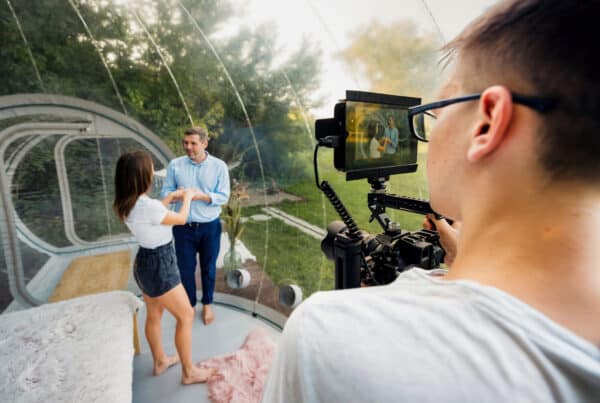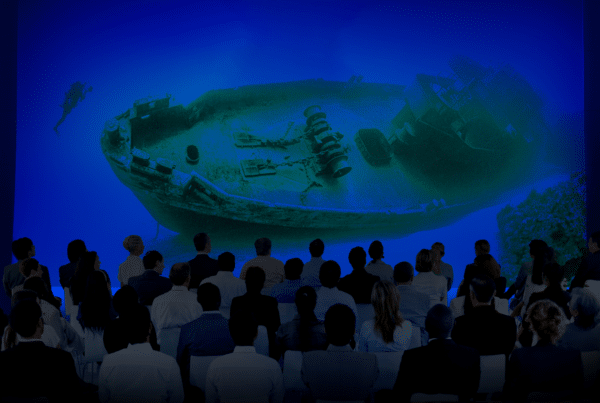Virtual tours, particularly 360 virtual tours, have transformed various industries by providing an immersive, interactive experience that offers a comprehensive insight into spaces without physical presence. Immersive video technology further enhances this experience. For architects and those involved in architectural design and construction, 3D virtual tours represent a significant advancement.
This article dives deep into how these innovative tools are reshaping the architectural world, enhancing project visualization, stakeholder engagement, and design efficiency in 2024 and beyond. Discover why embracing this technology is not just beneficial but essential for modern architectural practices.
What is a 360 Virtual Tour and How is it Changing Architecture?
A 360 virtual tour is an interactive exploration that allows users to navigate a 3D space virtually, providing a 360-degree view of an interior or exterior environment. This technology employs high-quality photography and software to stitch together panoramic images, creating an immersive experience that offers a realistic sense of space and scale. For architects, these tours allow for a detailed showcase of their projects, facilitating a better understanding among clients and stakeholders of the final outcome even before the construction starts.
The Benefits of Using 3D Virtual Tours for Architects
Implementing 3D virtual tours in architectural presentations can dramatically transform the client experience. These tours offer a vivid visualization of future projects, helping clients to see the potential of a space far beyond flat images or sketches. For architects, this means an elevated ability to communicate design intent and spatial concepts, ensuring that their vision is accurately understood and appreciated. Additionally, virtual tours save time and resources by minimizing the need for physical model construction and frequent site visits.
Interactive Features of 360 Virtual Tours: What Can You Do?
360 virtual tours are not just about passive viewing; they are highly interactive and engaging. Users can interact with various elements within the tour, such as hotspots, which provide additional information or links to more details, and embedded videos or sound clips that enhance the narrative. These features make virtual tours an invaluable tool for exhibitions or detailed architectural explorations where every element of the design needs to be highlighted and explained.
How Do Virtual Tours Facilitate Better Client Engagement?
Virtual tours empower clients to engage with the design in a dynamic and interactive manner. By virtually walking through the space, clients can explore different areas, experiment with potential changes, and identify any issues before they become costly during the construction phase. This proactive engagement helps in refining designs and aligns expectations, leading to higher client satisfaction and fewer revisions.
Virtual Reality (VR) and Virtual Tours: A Seamless Integration
The integration of VR with virtual tours offers a fully guided and even more immersive experience. Users equipped with VR headsets can navigate through detailed 3D models of architectural designs as if they were physically present. This technology is particularly effective in client presentations and stakeholder meetings where experiencing the spatial qualities of a design firsthand can significantly influence decision-making.
Case Studies: Iconic Buildings Showcased Through Virtual Tours
Examining virtual tours of famous buildings like the Zaha Hadid’s creations or the Guggenheim Museum virtual tours can provide insights into how these tools are used effectively in showcasing complex architectural designs. These case studies demonstrate the powerful impact of presenting architectural masterpieces through immersive, interactive virtual tours.
Technological Considerations: Creating a Virtual Tour
Creating a successful virtual tour requires understanding both the hardware and software involved. High-resolution cameras, advanced stitching software, and user-friendly virtual tour platforms are essential components. Additionally, architects must consider the integration of additional features such as interactive elements and VR compatibility to enhance the depth and quality of the tour.
Future Trends in 3D Virtual Tour Technology for Architecture
As technology advances, the capabilities of 3D virtual tours are expected to grow. Future trends may include more advanced AI integration for smarter navigation, real-time modifications within the tour, and even greater levels of interactivity. These advancements will continue to refine and elevate the user experience, making virtual tours an even more integral part of architectural visualization and presentation.
How to Choose the Best Virtual Tour Platform for Architectural Needs
Choosing the right platform for creating and hosting virtual tours is crucial. Key considerations should include the quality of the visuals, the range of interactive features, ease of use, and compatibility with other tools like VR. It’s also important to consider the level of customer support provided, ensuring any technical issues can be quickly resolved.
Key Takeaways
- Enhanced Visualization: 3D virtual tours offer a realistic, immersive view of architectural designs.
- Increased Engagement: Interactive features and VR integration ensure high client involvement.
- Cost Efficiency: Virtual tours save time and resources in the design and revision processes.
- Future Potential: Ongoing technological advancements promise even more impressive capabilities in future virtual tours.
Embracing 360 virtual tours in architecture not only aligns with current technological trends but sets a forward-thinking standard for the industry, ultimately enhancing both the creative and practical aspects of architectural work.
Embrace the future of architecture with 360 virtual tours.
Transform your designs into immersive, interactive experiences that captivate clients. Contact us today to learn how our cutting-edge solutions can elevate your architectural projects. Reach out now and start revolutionizing your design presentations with stunning virtual tours!


